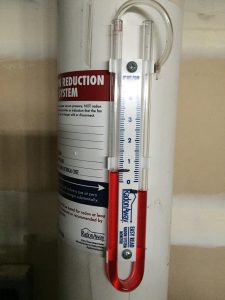What is Radon?
If you own a home you hopefully have heard at some point about radon. During your real estate transaction a radon disclosure must be given. The form discloses any information the seller has about the home regarding radon hazards. The seller, buyer, and real estate agent are required to initial the disclosure. Along with the disclosure, your agent should give you a brochure that explains the issues with radon. I have created video explaining what radon is and listed some frequently asked questions concerning radon when buying a home.
Some of the common questions I get from buyers are:
Do I really need to test for radon? This is the number one question I receive from buyers in regards to Radon. Please watch the video and listen to all of the information I have provided. The tests are not incredibly cheap and there are many fees associated with buying a home. The cost of having a radon test is minimal in comparison to the other costs and fees of buying a home. While I understand wanting to save a buck now, not testing for radon can cost you thousands later. If the cost is the sticking point, you COULD test after the closing with a $10.00 do-it-yourself style kit from Home Depot. But if that comes back positive you will be paying the full cost to have the home mitigated, which can range from about $1200 to about $3000. If you spend the money for a professional test during the inspection contingency, you are able to negotiate with the seller in regards to who will pay for the home to be mitigated. The only risk you take is that the radon levels come in at levels below recommended mitigation, to which the seller would rarely agree to install a mitigation system. In my opinion, GET THE RADON TEST DONE NOW BEFORE YOU CLOSE!
I plan on making a bedroom for my child in the basement, is it safe to do so once a home has been mitigated (or if the Radon levels are below 4.0 PCi/L)? The EPA gives us a limit of 4.o PCi/L and above for mitigation being necessary to avoid health risks. The truth is however that there is no SAFE level of Radon. We simply do not have any information saying what a truly safe level is- meaning at what level will radon not cause any potential health issues. What we do know is that radon is naturally occurring and it is almost everywhere, but in certain parts of the country radon levels are higher. And in those areas, an unmitigated home causes radon to be trapped inside increasing your exposure. What I tell my clients is they should make that decision based on their comfort level with the information we do have from the EPA.
I am buying a new construction home and I see Radon Equipment, but they tell me the home has not been mitigated. Do I still need to pay for the home to be mitigated? What you are seeing (in most cases) is called a “passive” radon system. These radon systems DO NOT have the fan installed that is used to create a vacuum and suction the air from underneath your home to the outside. I recommend you have a Radon inspection to check the level. If the level comes back above 4.0 PCi/L then I recommend contacting a Radon Mitigation professional who can easily install the fan for proper mitigation. Even if the level is close, I would not risk my health over a relatively low cost to install the fan.
After I mitigate my home I don’t need to do anything else, right? Yes, and no. After the home has been mitigated and tested to confirm a level below 4.0 PCi/L (or a level your are comfortable with), you should do weekly checks on the radon system itself by looking at the u-shaped tube to confirm that the system is pressurized correctly. You will find the U-Tube located on the suction pipe. There are many things that can make those levels go up or down. You can have a blockage in the tube reducing the suction, or a fan that has faulted. If you notice any changes to your levels you should contact the company that mitigated the home to have them inspect the unit. You also need to re-test your levels every 2 years to ensure the mitigation system is working properly. You can test with a simple $10 do-it-yourself kit from Home Depot every 2 years to be safe. If it comes back high you will need to contact the company who installed it to come and inspect the unit. To maintain a warranty however, you may need to have it professionally checked. Here is what the pressure sensor (u-tube) looks like:

Are you looking to buy a home? Click Here to go to my website for helpful tips on buying a home.
Are you interested in selling your home? Click Here to go to my website for helpful tips on selling your home.
